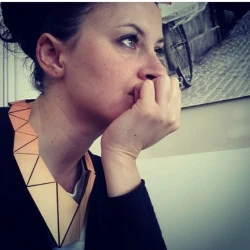Architect, entrepreneur, interior designer and textile innovator: Florence Knoll left an imprint that transcends any specific fields
An influential woman in a male-dominated industry, mostly renowned for shaping the design of modern workplaces, Florence Knoll is the Queen Mother of American mid-century design aesthetic.
With a rationalist design approach, influenced by Bauhaus and American modernism, after graduation Florence Knoll found herself as the only woman part of the team at Mies van de Rohe practice, an exclusive condition that permitted her to focus on a field that her male colleagues had been snubbed for years: interior design.
More a shaper than a mere space decorator, in 1941 Florence Knoll met Hans Knoll, the third generation of a Stuttgart-based furniture manufacturing, and became his partner in both life and work.
In 1946 Florence Knoll began the ‘Knoll Planning Unit’, the interior planning arm of Knoll, whose radical, groundbreaking influence set the standard for the mid-century modern interior design.
Knoll is a renowned brand, find out more about other successful furniture companies: don’t miss Brand Story – Kartell.
Knoll’s Furniture Design
Florence Knoll’s spare, minimalist style can be traced not only in her own furniture designs, now held in the permanent collection of museums around the world but also in her choice of architects and designers for the Knoll team.
If you have ever sat in a Saarinen Tulip Chair or on a Barcelona by Mies van der Rohe you might have felt her influence, which largely exemplified the ethos of the mid-century design aesthetic.
Experimenting new materials: the Womb Chair
One of Knoll’s most iconic pieces was an early example of molded-plastic production: the Womb Chair owes its name to the comforting oasis of calm it offers.
Designed by Eero Saarinen upon Florence Knoll’s request for a chair that was like ‘a basket full of pillows’, the Womb Chair and its other companions feature removable cushions and are the beginning of what Florence Knoll would call ‘fill-in’ pieces.
Shaping post-war American workplaces
Florence Knoll established her Knoll Planning Unit with the belief that a modern building necessitated a modern interior: with this in-house architecture studio she revolutionized the spaces of the 9 to 5 working America, from the CBS building to IBM and General Motors Headquarters.
For the first time in American design culture, Knoll and her team brought architecture, spatial planning, fabric and furniture together, an all-encompassing experience to show different approaches to workspaces, that included not only open spaces and clean lines, but also lounge arrangements and living rooms.
Rethinking the details
As a student, during the late 1930s Florence Knoll had developed a technique called ‘paste-up’ and eventually brought it to her Knoll Planning Unit: she would show the client a miniature plan for his office, including furniture at scale and swatches of real fabric.
The system started to be used by every design office as a standard.
Raising the bar for design retails
Florence Knoll possessed great marketing acumen, and used art and design as promotion tools: more than just sale-rooms, the Knoll showrooms, conceived as aesthetic models and research labs, were often featured in glossy magazines and received many design awards, quickly becoming an inspiration for competitors and admirers.
Not bad for a girl of humble origins, the daughter of a baker, orphaned at 12 years old.
Curious to know more about iconic designers? Don’t miss Design Icons – Ron Arad.


